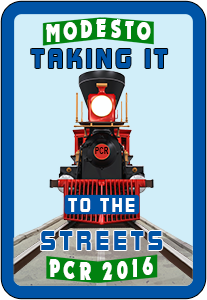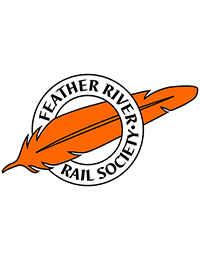Layout Design / Operations Special Interest Groups
SIG Activities Coordinator: David Parks
Prototype Operating Sessions
There is still time
Everyone registered with the PCR2016 “Taking It To The Streets” or the FRRS convention is eligible to crew the prototype op sessions listed below. You may sign up for as many op sessions as you wish. List the layouts in order of preference since you may not get your first choice. Specify how many total op sessions you wish. First time and beginning operators are welcome and expected.
The layout list is short but contains two very large layouts which helped pioneer prototype operating in Northern California. John Zach and Steve Hayes although more than an hour travel from Modesto, are only about 20 minutes apart and will both be open for touring beginning at 5:00 PM on Friday. This allows for touring both layouts and then marking up for an evening of operating at Steve Hayes’s Western Pacific. If you want to crew one of these op sessions, but need some time flexibility, sign up and let me know of your special requirements. All three op session layouts are HO scale. Layout pictures are on the convention web site: http://www.pcrnmra.org/conv2016/layouts.html
Contact:
David Parks
bearwestern@comcast.net
Wait List Only David Stanley – Thursday April 21 1:00 PM to 4:30 PM in Morada (Suburban Stockton). The freelanced Morada Belt RR is 20 x 20. Set in the 1950's with 360 feet of mainline as well as a 35-foot branch line. Track is commercial code 83 and code 70, a "point to loop" design with 30" minimum radius on the main track, one staging and two working yards. Scenery is 90% complete and ranges from Tehachapi-style semi-arid to sandstone cliffs (reminiscent of Eagles Nest, Montana on the Milwaukee Road) to the Sierra Nevada foothills. Backdrops were painted by noted artist and book author John Signor. Operation is a trackage-rights operated bridge line used by several of the large western carriers of the 1950's, utilized when their own corridors are congested. This is a model railroad designed by a real-life railroader for operating sessions, without sacrificing the scenic beauty of the west. DCC. Featured in January 2014 RMC.
John Zach – Thursday April 21 7:00 PM to 11:00 PM in Twain Harte. The Sierra RR and Westside Lumber Co HO and HO N3 model railroad is based on the Sierra Railroad that started its long and glorious history in 1897 and is still in operation today. The time frame for the layout is the Spring of 1955 when the first diesels (Baldwin S-12s) arrive on the railroad and the logging railroads of the Pickering and WSLCo are still going strong. The layout is constructed in an 1500 foot basement within sight of the right-of-way of the abandoned prototype RR. Operations follow the prototype with a simplified TT&TO scheme. The layout is faithful to the prototype although some industries operated over a longer time frame to increase operating interest. A 4:1 fast clock is used. The layout is well documented with switch lists, waybills, maps, train briefs and timetables. Track is generally flex with commercial turnouts and operates reliably. Train crews use radio cabs while yard cabs are tethered. The layout can accommodate up to 15 operators including 3 yardmasters, a dispatcher and road crews. Easy DCC. www.sierrarailroad55.com
Steve Hayes – Friday April 22 6:00 PM to 10:00 PM in Sonora. Western Pacific from Oakland to Salt Lake City in 1965 to 1969. There are branches to Reno and to Turlock (the Tidewater Southern). Also modeled is the Highline which ran from Keddie to Bieber California. This was the WP’s connection to the great north west via the Great Northern Railroad. WP in 1965-69 from Oakland to Salt Lake City. 1800 sq feet basement with 700 foot single track mainline, 9 passing sidings. Many highly detailed structures including a magnificent model of the Oakland WP station. Operations are purposeful and include the California Zephyr and 20+ freight trains during a 4 hours operating session over a fully signaled mainline. Fairly disciplined with a goal of “doing things right” while having an enjoyable time. Many engines are battery operated DCC radio controlled resulting in amazingly smooth performance. The layout also has Chubb CMRI Computer System with progressive cab control, telephone, CTC, fast clock and sequence operations, computer generated waybills system for mainline car movement, switch lists at yards. Steve's WP Layout or steveswplayout.hayeswp.com
The SIGs
The Layout Design SIG's prime purpose is to help modelers design and build a model railroad to enhance future operations with minimum space and cost, while avoiding common design flaws, and include prototypical and model design features that maximize operating interest and visual interest.
The Operations SIG is devoted to furthering the simulation of prototypical operating practices by using the forms, procedures, communications, and train schedules on model railroads.
Members of other NMRA SIGs are welcome to participate in Taking It To The Streets 2016 and encouraged to contact me if interested.
SIG Activities Coordinator: David Parks
This page last updated:



